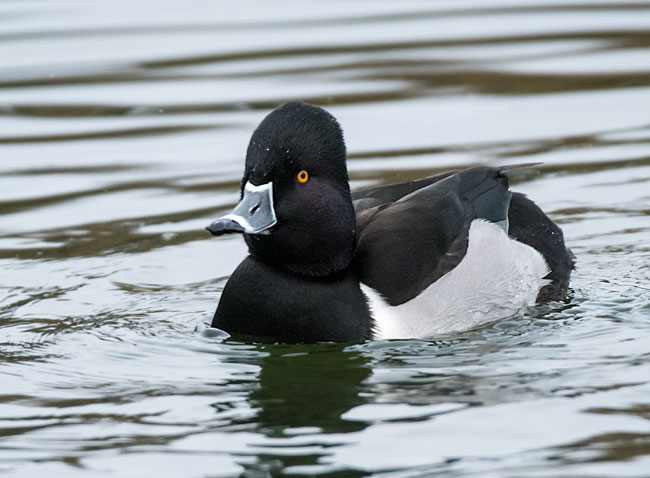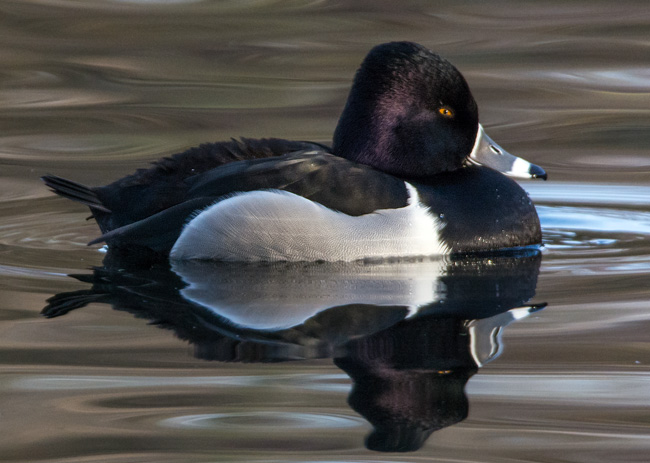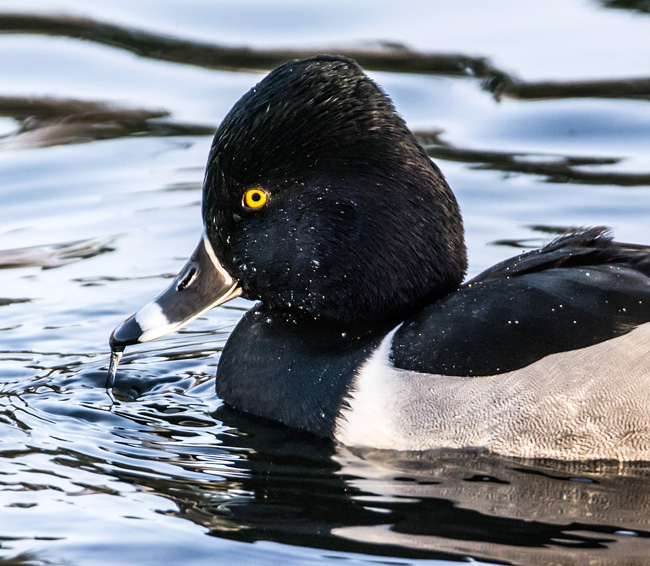
|
Ring Necked Duck
|
||
|
Taken
at Victoria Park on 8th January 2022 using Nikon D500 with Sigma 600 mm zoom lens.
|

|
|

| Taken at Pitlochry on 23rd January 2017 using Nikon D5200 with Sigma 600 mm zoom lens. |  |


| Taken at Bingham's Pond on 8th January 2023 using Nikon D500 with Sigma 600 mm zoom lens. |  |

| Ringed Necked Duck. |
| Species : Order: Family: Local names: |
Aythya collaris. Anseriformes. Anatidae. |
| Site
Of Nest: Food: Plumage: Breeding Period: Eggs: |
Bowl-shaped, built on water in dense emergent vegetation with sedges and woody plants. Omnivores and feed mainly by diving or dabbling at the surface. Ducklings are dependent on animal matter such as insects earth worms, leeches, midges and snails. As they mature they tend change their diet to submerged plants. The adult male is similar in color pattern to the Eurasian tufted duck, its relative. Males are a little bit bigger than the female. It has two white rings surrounding its gray bill, a shiny black angular head, black back, white line on the wings, a white breast and yellow eyes. The adult female has a grayish brown angular head and body with a dark brown back, a dark bill with a more subtle light band than the male, grayish-blue feet and brown eyes with white rings surrounding them. The cinnamon neck ring is usually difficult to observe, which is why the bird is sometimes referred to as a "ringbill". Their breeding habitat is wooded lakes or ponds in the northern United States and Canada. The main breeding area is Northwest boreal forest territories. Ring-necked duck pairs start during spring migration. Unpaired ducks showing up on breeding grounds will most likely end up being non-breeders. The pairs stay together only for reproduction, then, they separate. One per day until 8 - 10 are laid. |
| Voice |